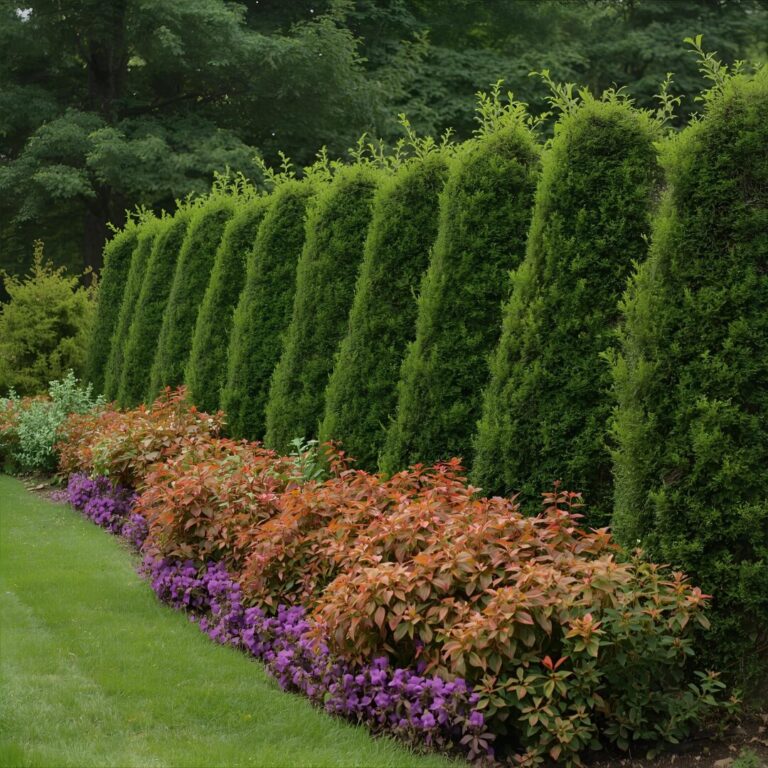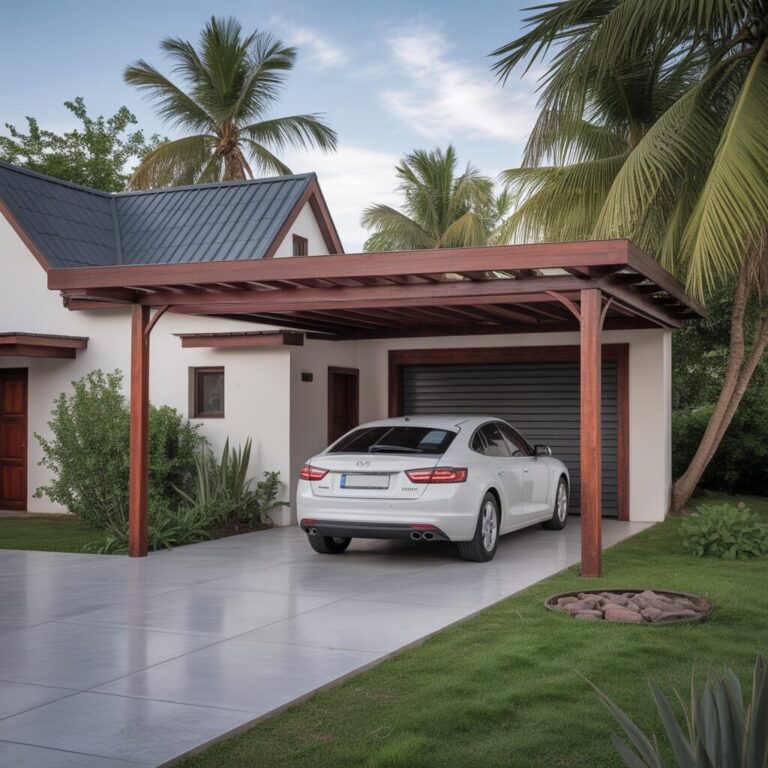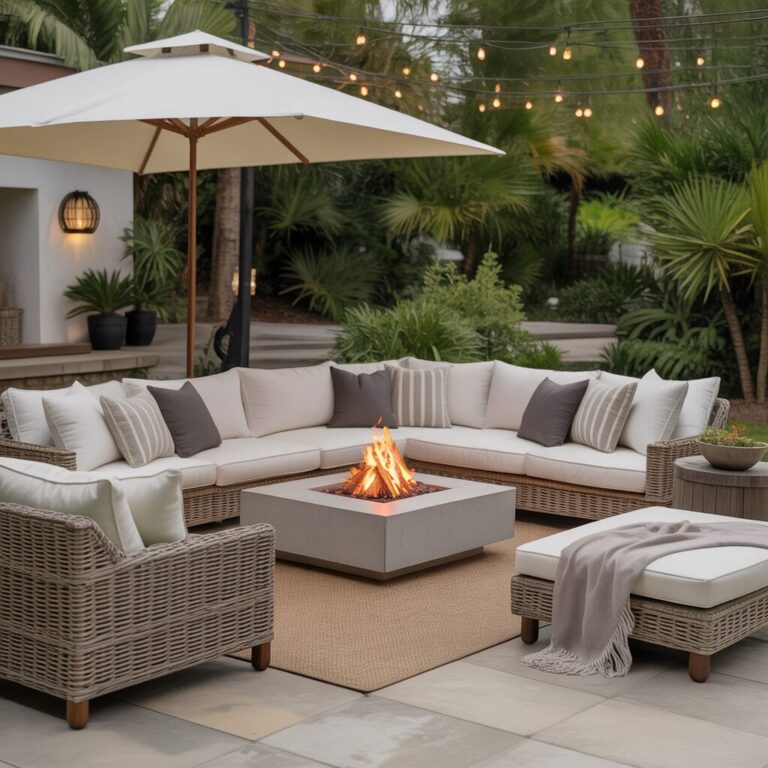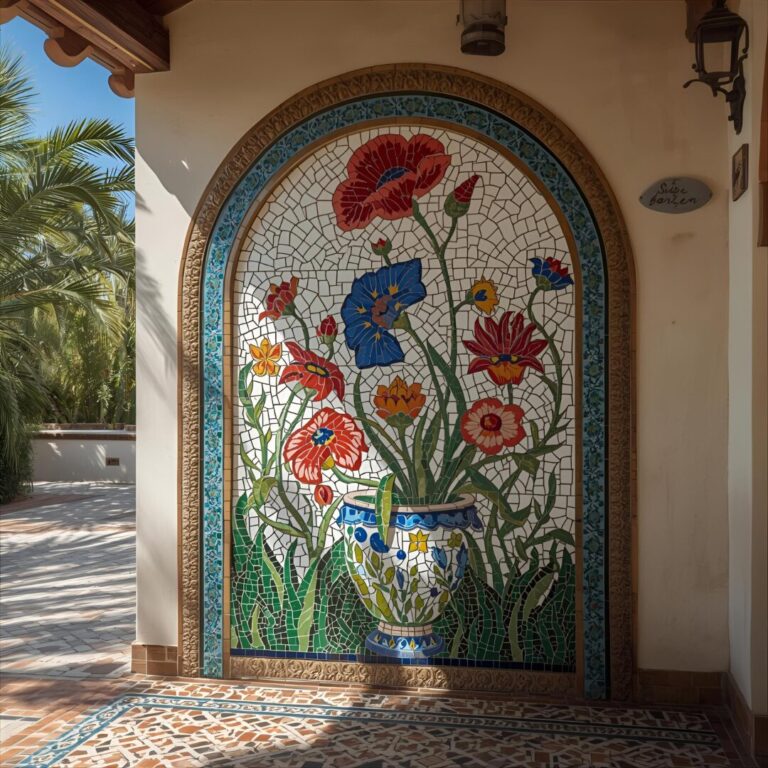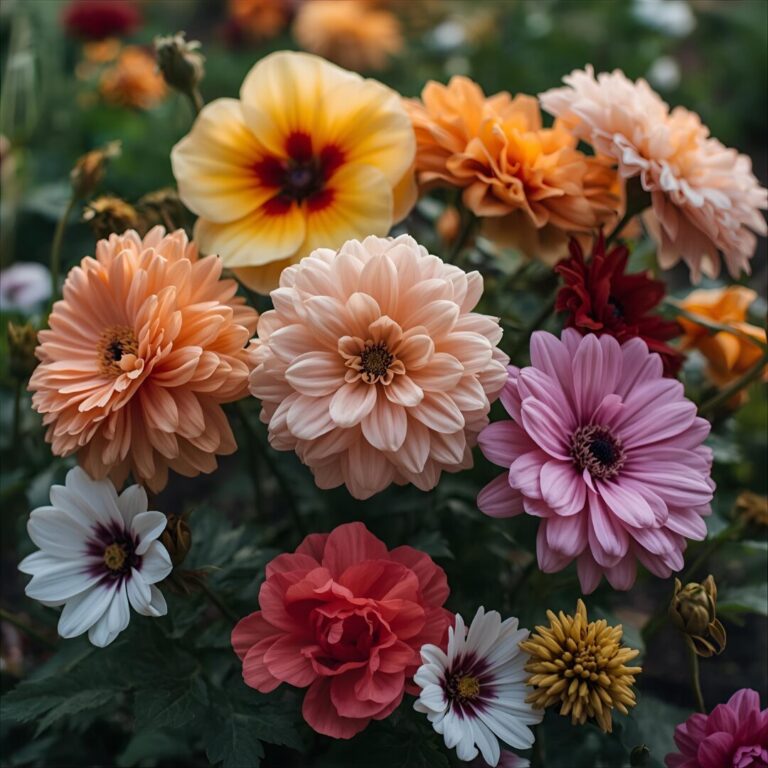12 Shade Garden Design Layout Ideas for a Lush and Inviting Outdoor Space
12 Shade Garden Design Layout Ideas for a Lush and Inviting Outdoor Space
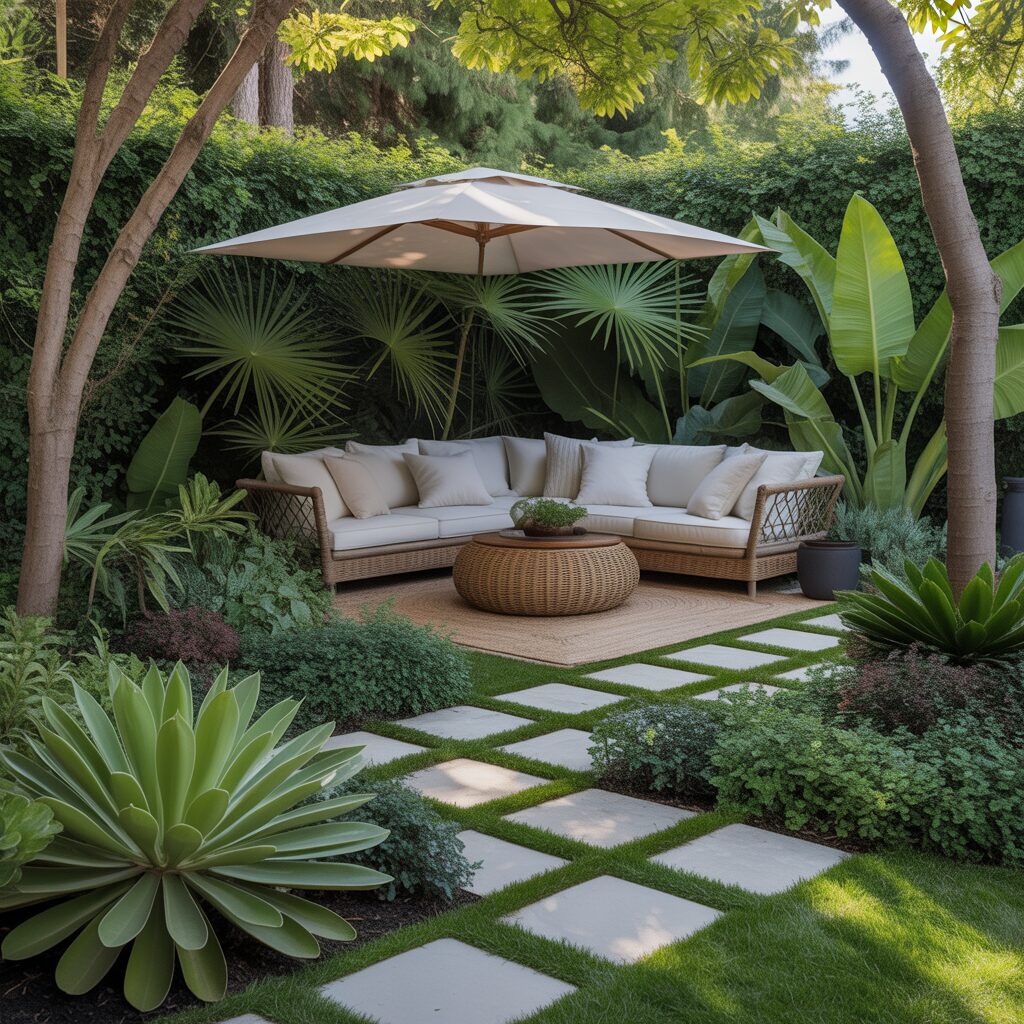
Shade gardens are perfect for areas of your yard that receive limited sunlight, transforming them into serene and lush retreats. With the right plant choices and design layout, even the shadiest corners can become visually stunning. Shade gardens offer a cool, relaxing escape while adding depth and texture to your outdoor spaces. Using layered planting, natural elements, and thoughtful furniture placement can maximize their charm. Here are 12 shade garden design layout ideas to inspire your next outdoor project.
1. Layered Planting with Height Variation
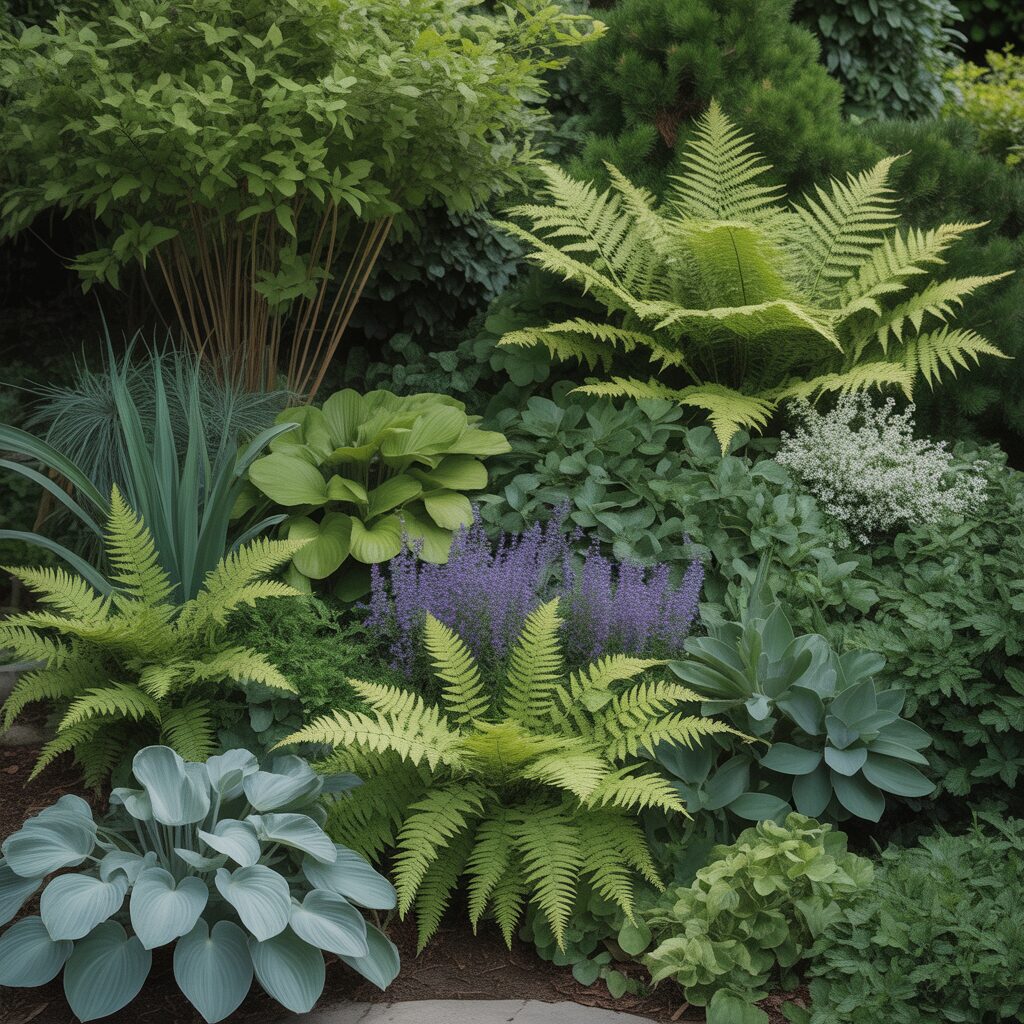
Creating layers of plants with varying heights adds depth and dimension to a shade garden. Taller plants at the back and shorter ground covers in front create a natural, cascading effect. Ferns, hostas, and shade-loving shrubs work beautifully. This approach ensures every plant is visible and the garden feels full.
Pro Tip: Mix textures like leafy ferns with soft blooms for contrast and visual interest.
2. Meandering Pathways
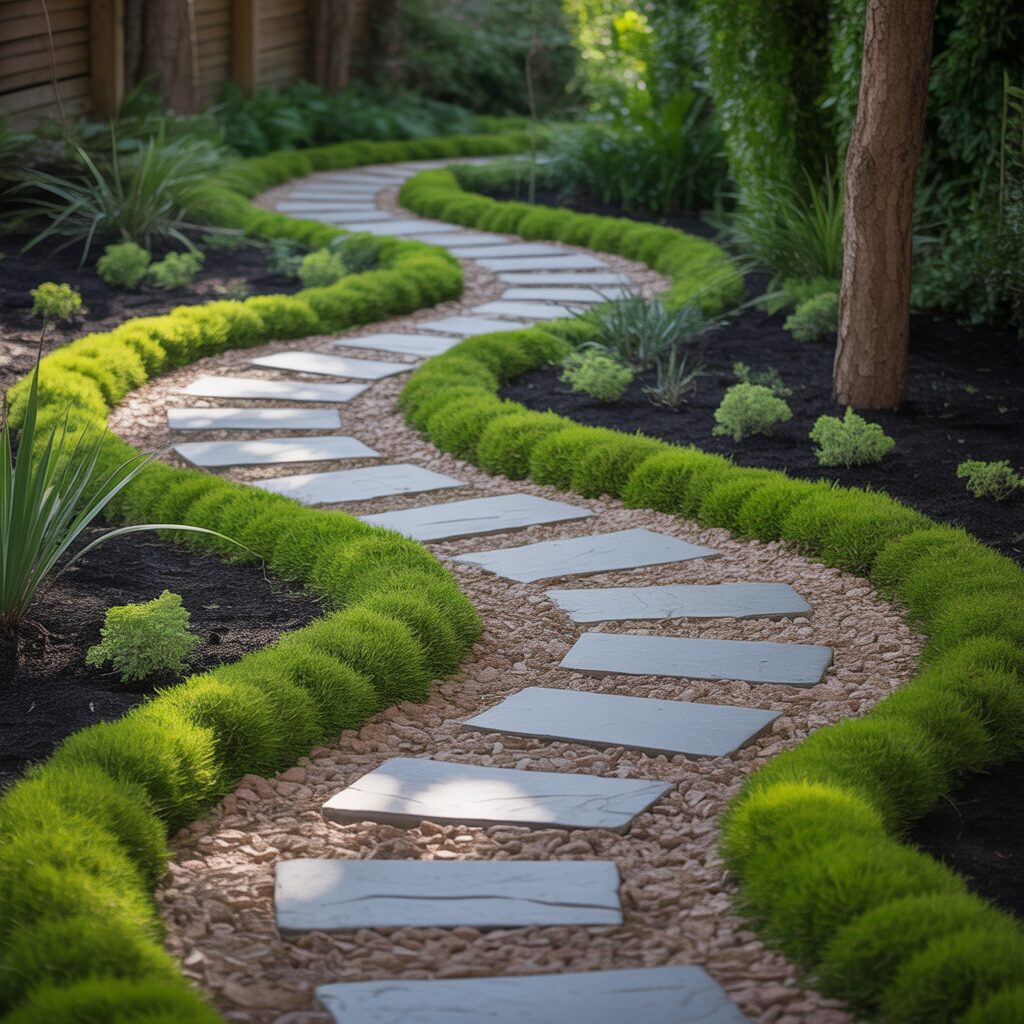
A winding pathway invites exploration while providing structure to shaded areas. Gravel, stone, or mulch paths guide visitors and make the garden accessible. Paths can be bordered with low plants to enhance charm. This layout makes even small shade gardens feel expansive.
Pro Tip: Add stepping stones with spaces for moss or groundcover for a natural look.
3. Zen-Inspired Minimalist Layout
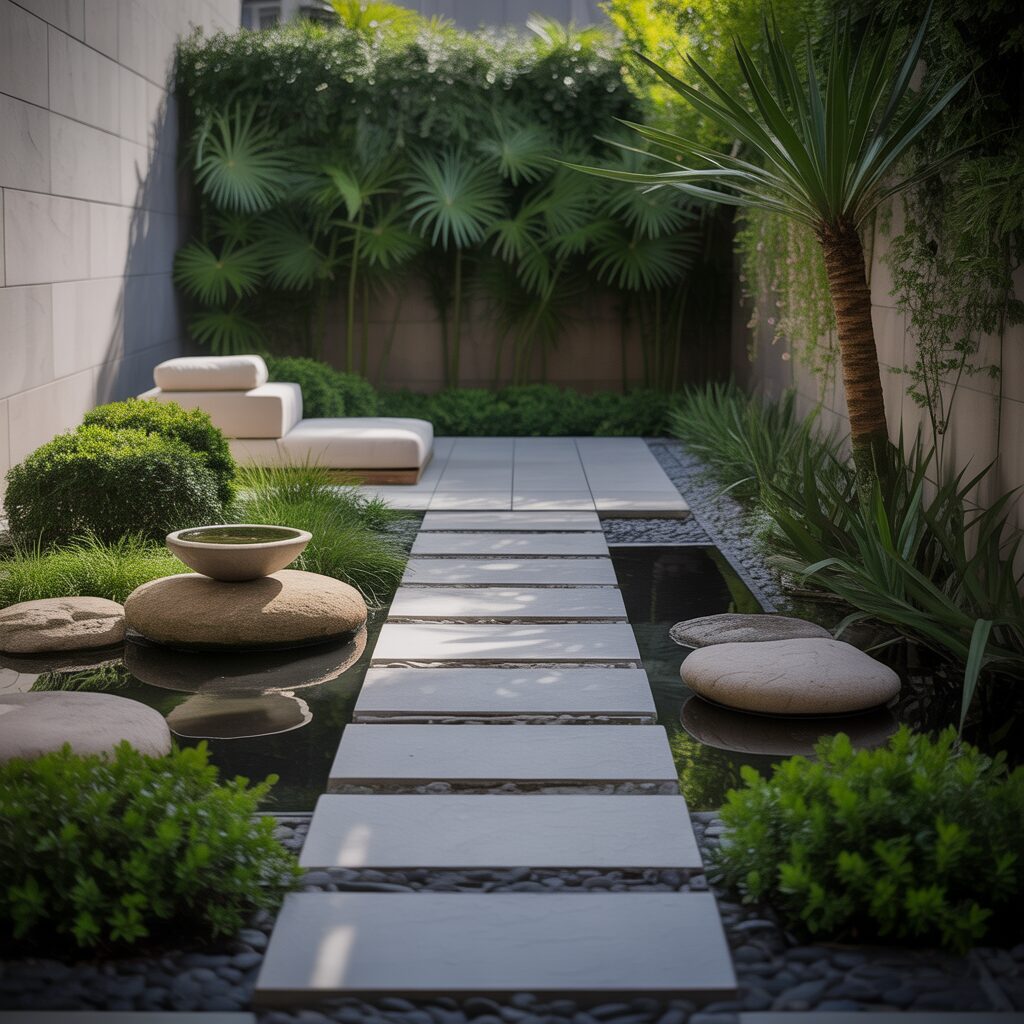
A minimalist shade garden uses simple plantings, stones, and water features for a calming effect. Limited plant variety and clean lines create a serene atmosphere. Perfect for meditation or quiet outdoor seating areas. Focus on balance and harmony for maximum impact.
Pro Tip: Incorporate a small water fountain or birdbath to add tranquility and sound.
4. Layered Foliage and Flowers
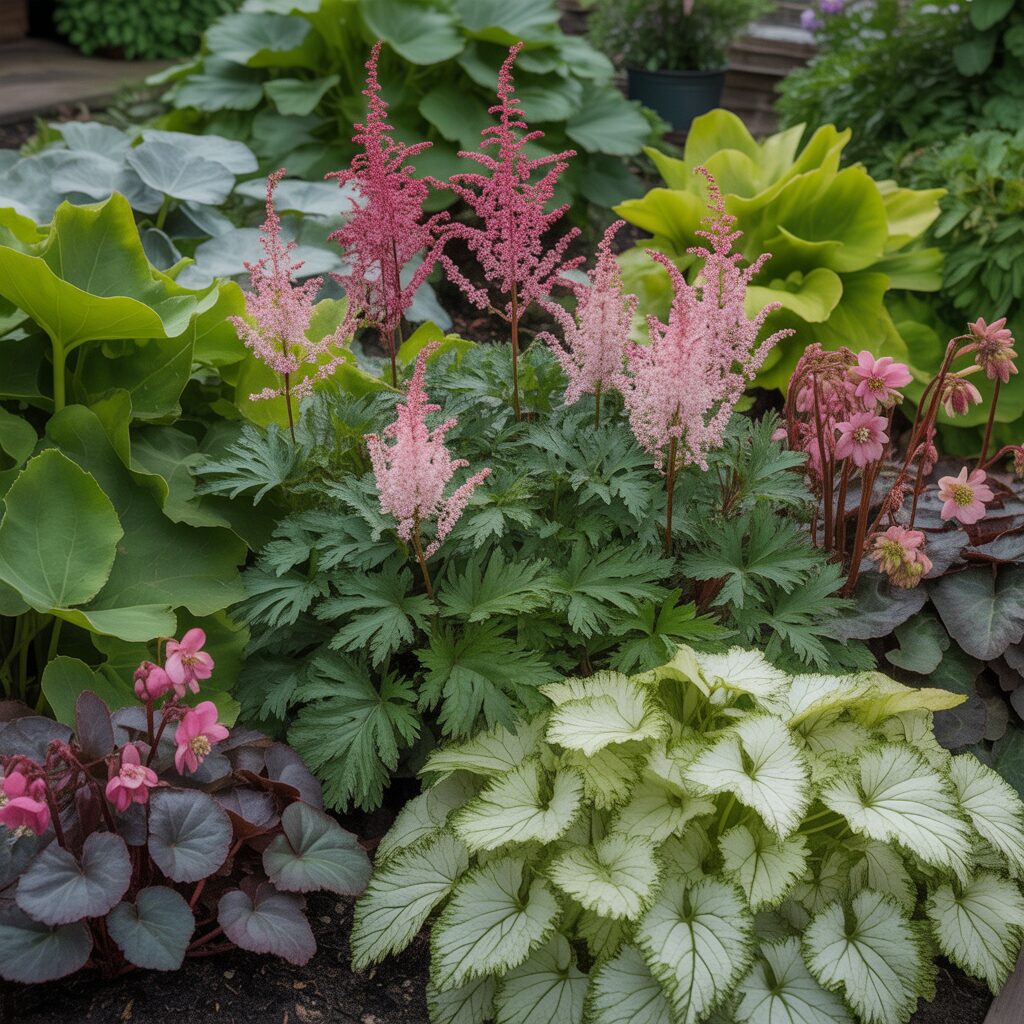
Mixing leafy green plants with colorful shade-tolerant flowers adds vibrancy. Plants like astilbe, bleeding heart, and hellebores thrive in low-light areas. Layering textures and colors creates a dynamic, lively garden. This method ensures that even shaded corners feel visually engaging.
Pro Tip: Plant in clusters to mimic natural growth patterns and enhance fullness.
5. Vertical Gardening and Trellises
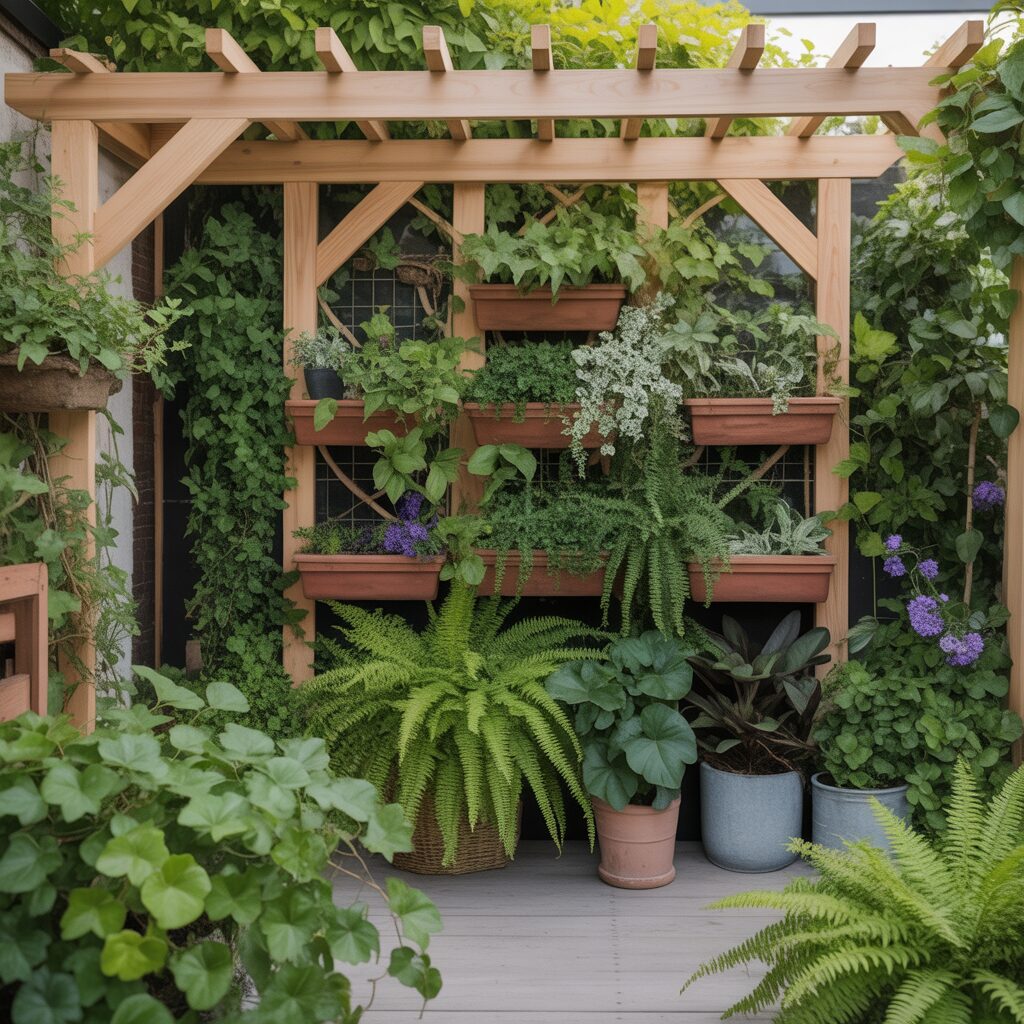
Shade gardens benefit from vertical elements such as trellises, arbors, or hanging planters. Climbing plants like ivy, clematis, or ferns add height and visual interest. Vertical gardening maximizes space in small shaded areas.
Pro Tip: Use trellises as natural screens to create privacy or define spaces.
6. Seating Areas Amid Shade
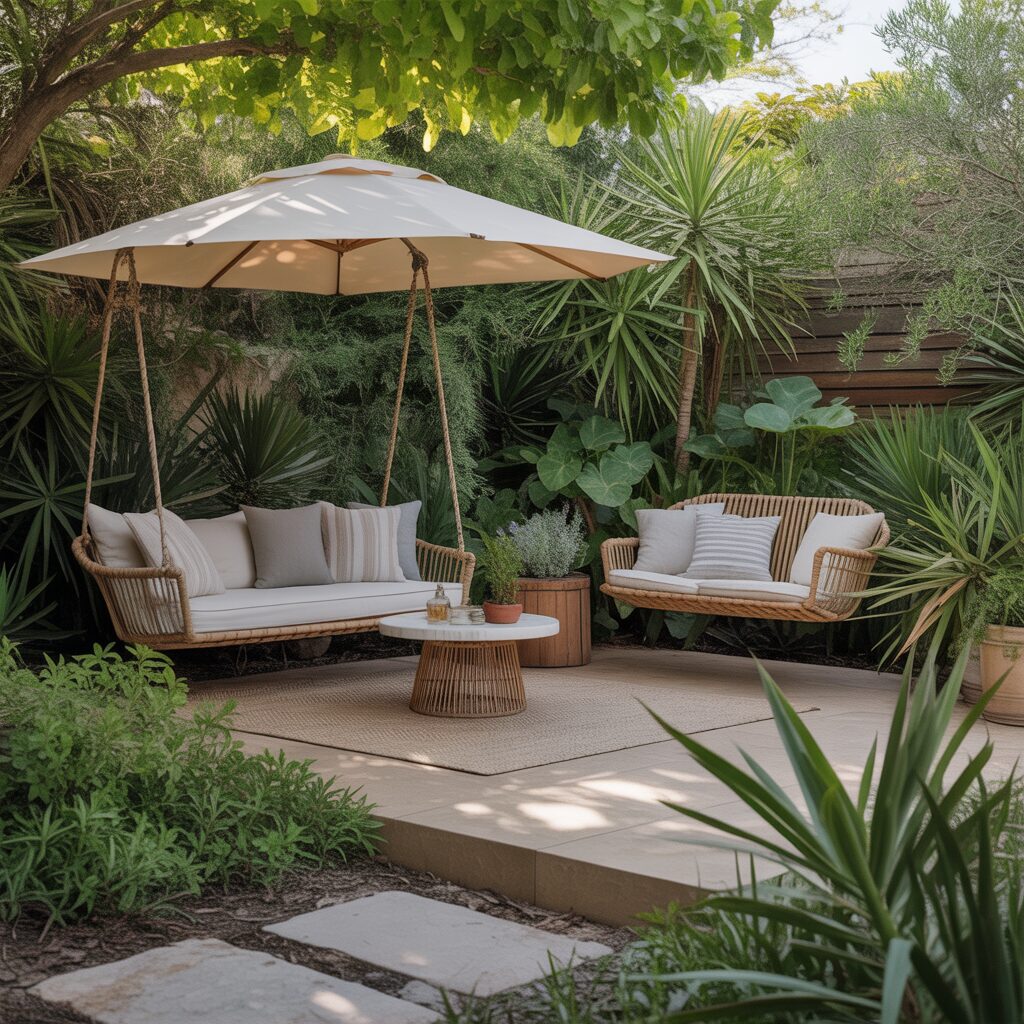
Adding benches, swings, or small patios creates a functional space within the shade garden. Furniture integrated with plants feels cozy and inviting. Strategic placement ensures relaxation spots enjoy the best views.
Pro Tip: Choose weather-resistant furniture in natural tones to blend seamlessly with the garden.
7. Woodland-Inspired Shade Garden
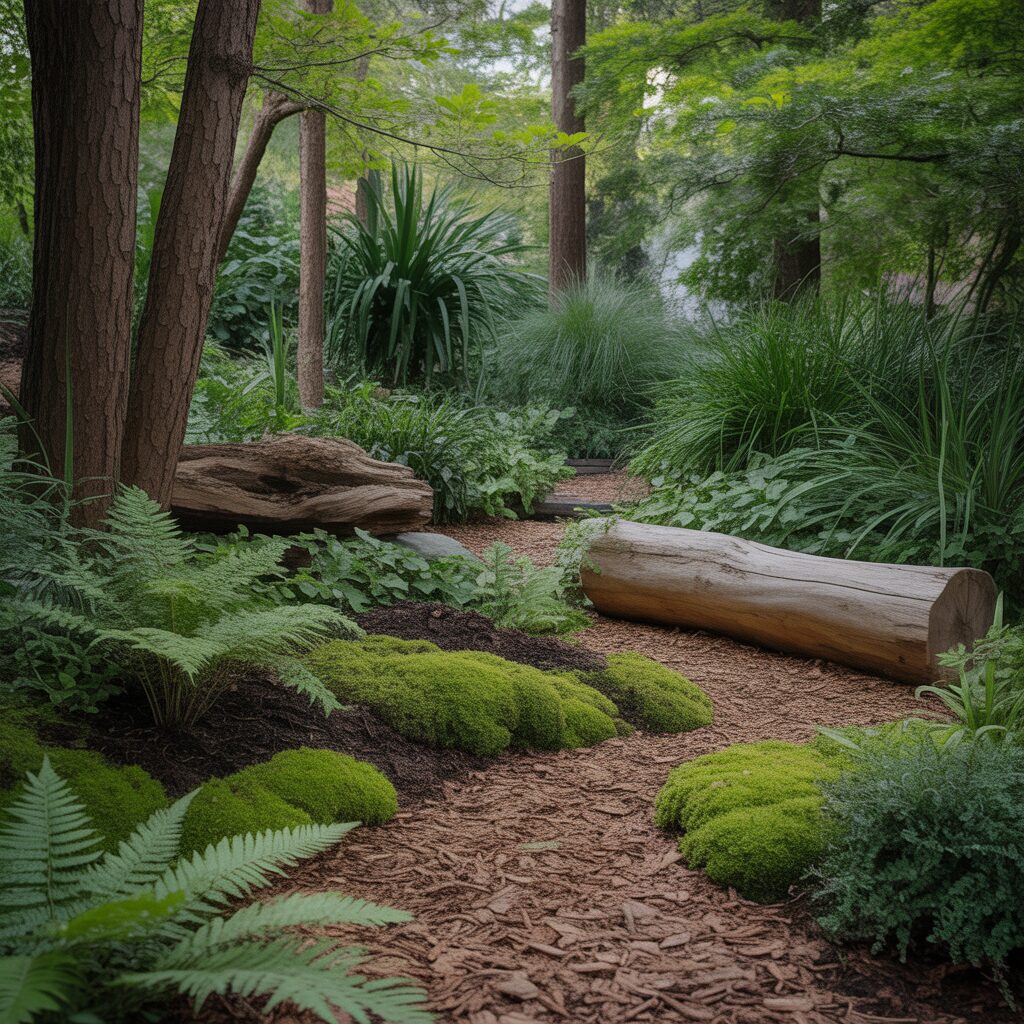
Mimic a woodland feel by using native shade-tolerant trees, shrubs, and ferns. Add mulch paths and moss to enhance authenticity. This creates a natural and serene atmosphere reminiscent of a forest retreat.
Pro Tip: Incorporate fallen logs or rocks as accents for a naturalistic look.
8. Colorful Accent Plants
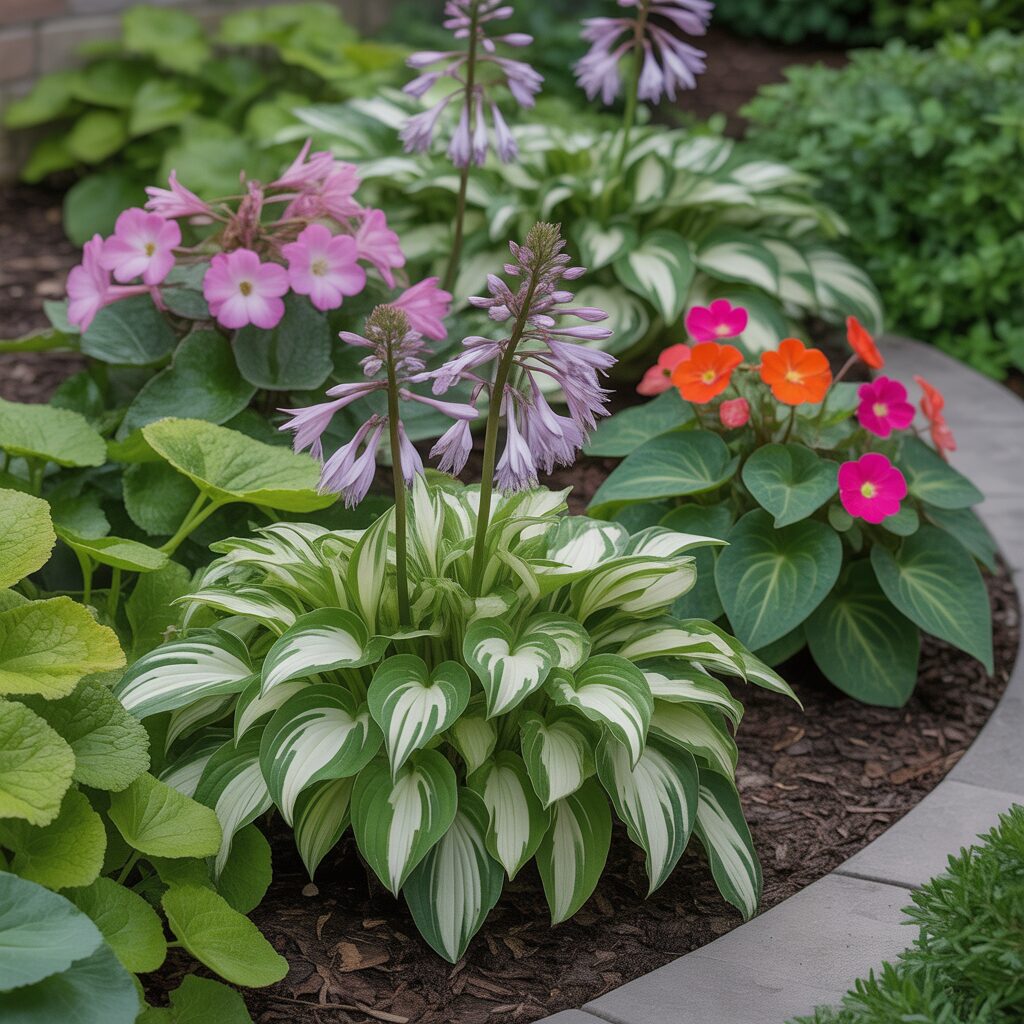
Even in shade, pops of color can energize the garden. Shade-tolerant blooms like hostas with variegated leaves, impatiens, or columbine create visual interest. Place colorful plants near focal points like pathways or seating.
Pro Tip: Choose blooms that contrast with green foliage to make colors stand out.
9. Water Features in Shade
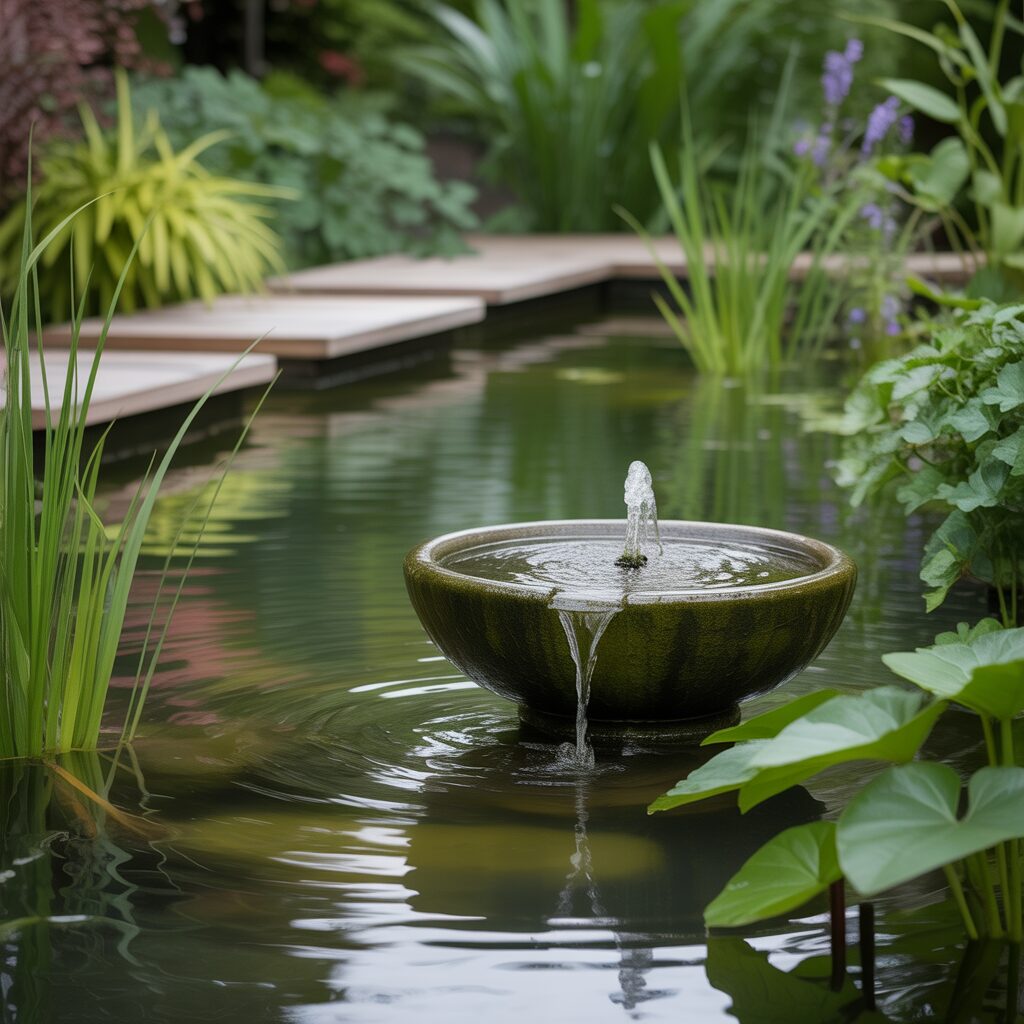
Small ponds, fountains, or birdbaths enhance the soothing environment of a shade garden. Water reflects light, making shaded areas feel brighter. It also attracts birds and pollinators, adding life to the garden.
Pro Tip: Position water features near seating areas to enjoy sound and movement.
10. Container Plantings
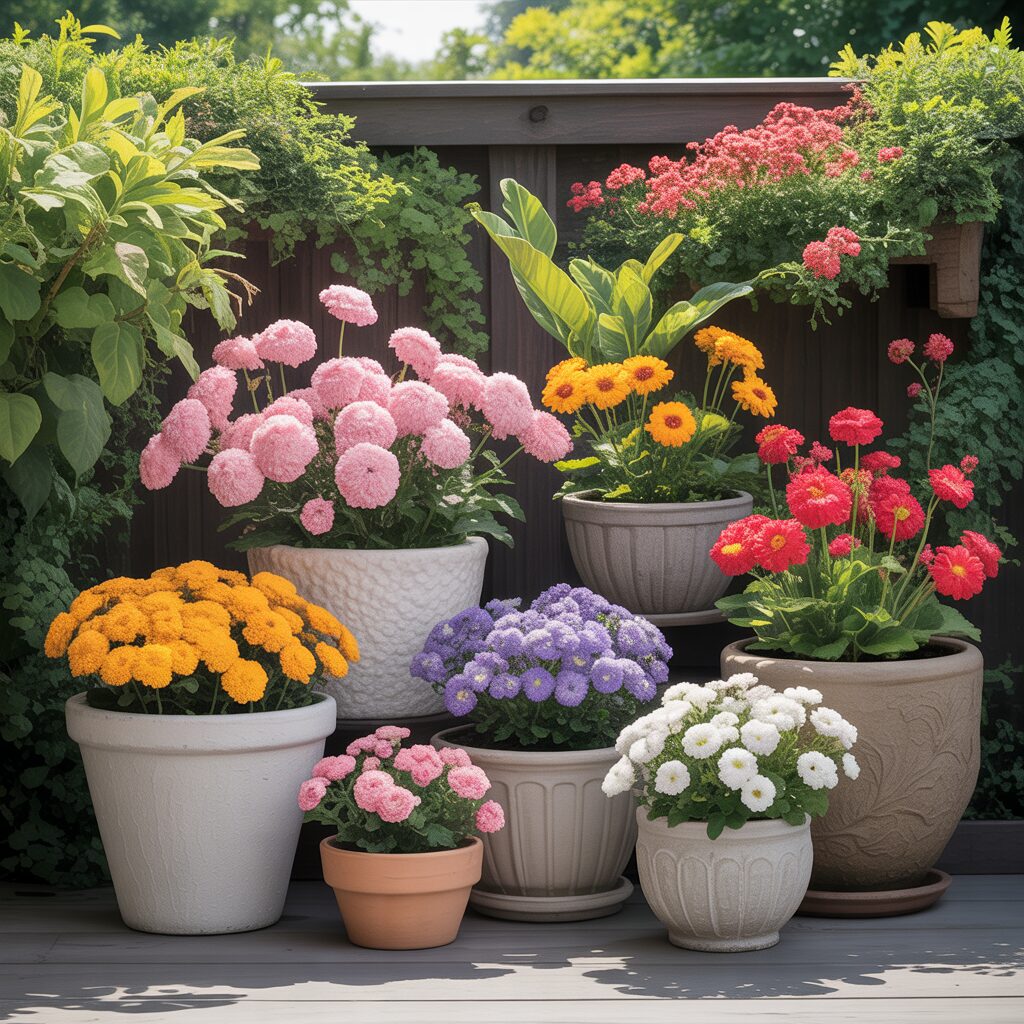
Containers allow flexibility and variety in shaded spaces. Use ceramic, stone, or wooden pots to introduce plants in different heights and textures. Containers also allow seasonal rotation of flowers.
Pro Tip: Group containers in odd numbers for balance and visual appeal.
11. Mixed Textures for Interest
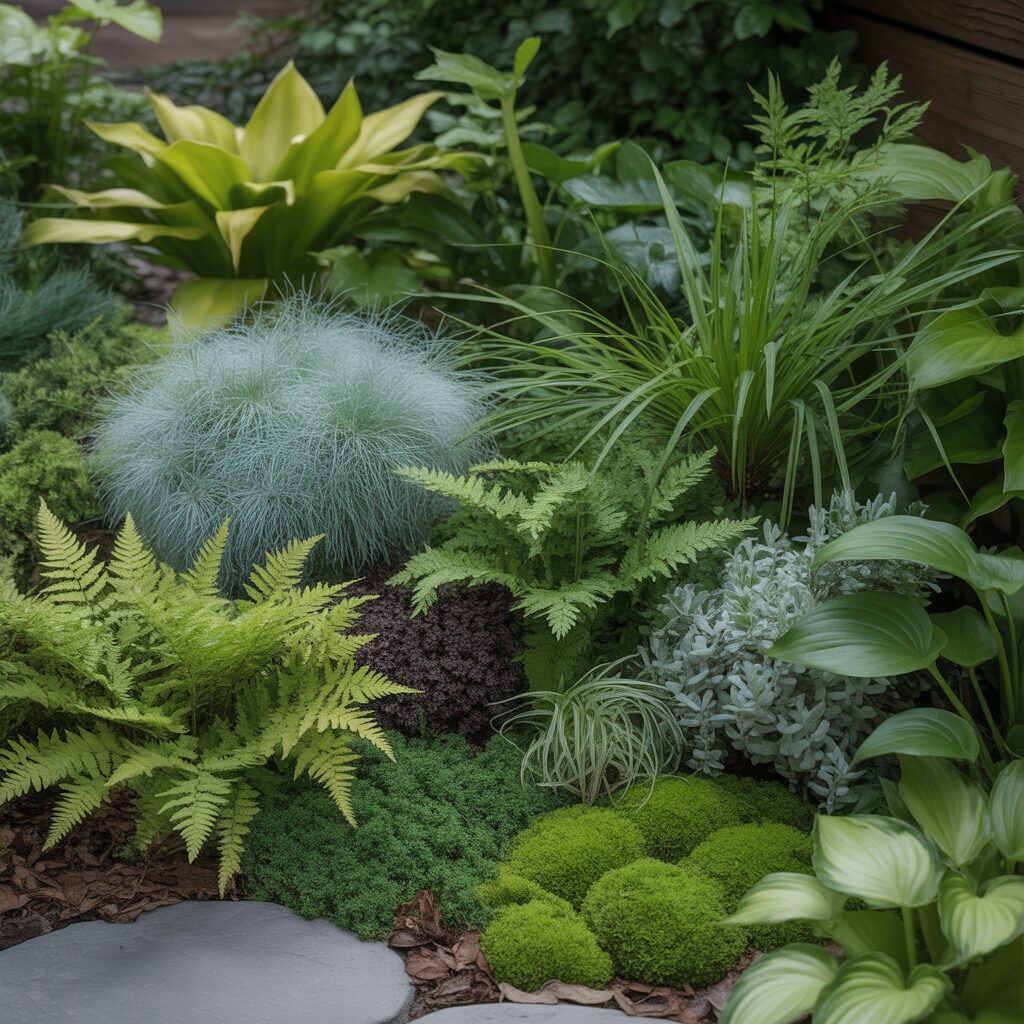
Combining smooth, spiky, and feathery textures creates depth in shade gardens. Ferns, hostas, ornamental grasses, and mosses contrast beautifully. Texture variety ensures the garden looks lively even without direct sunlight.
Pro Tip: Place contrasting textures next to each other to highlight differences and keep the garden dynamic.
12. Pathway Lighting for Ambiance
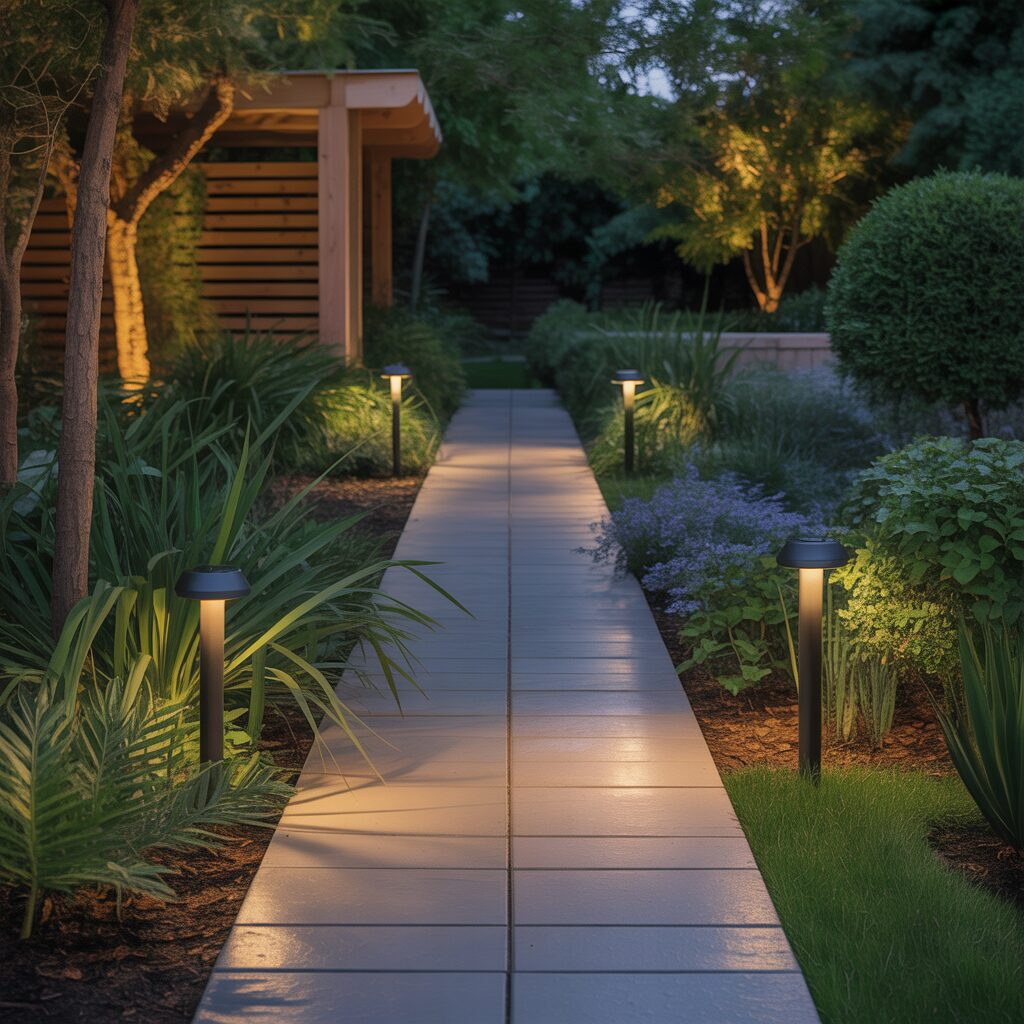
Subtle lighting along shade garden paths adds safety and creates a magical evening atmosphere. Solar stakes, lanterns, or LED lights highlight plants and pathways without overpowering the natural look. Lighting extends usability into the evening.
Pro Tip: Choose warm-toned lighting to maintain a cozy and inviting feel.
Conclusion
Shade gardens offer a unique opportunity to create lush, tranquil outdoor spaces even in low-light areas. Using layered plantings, textured foliage, vertical elements, and thoughtful pathways transforms shady corners into inviting retreats. Incorporating seating, water features, and subtle lighting enhances functionality and ambiance. These shade garden layout ideas will help you design a visually appealing, relaxing space that maximizes every square foot of shade in your yard.

